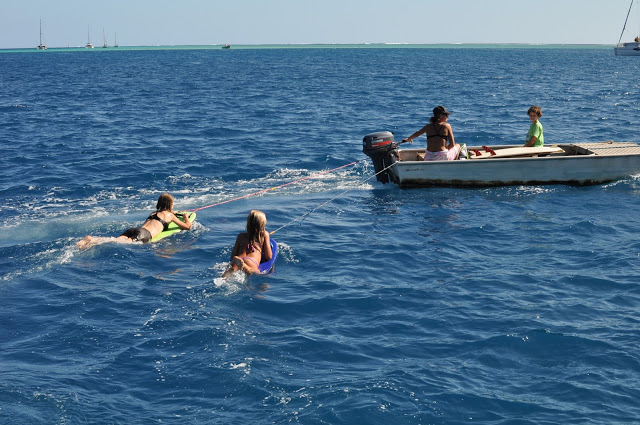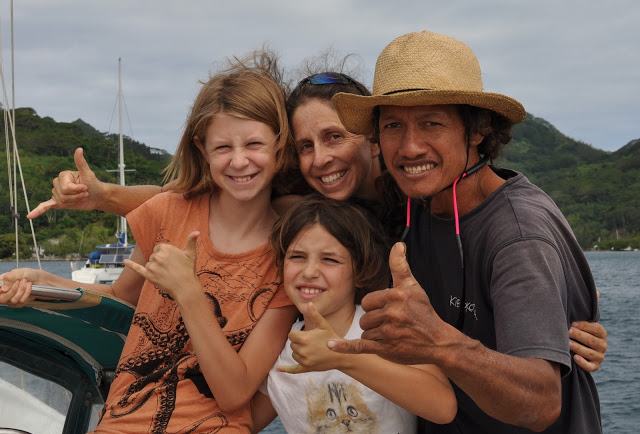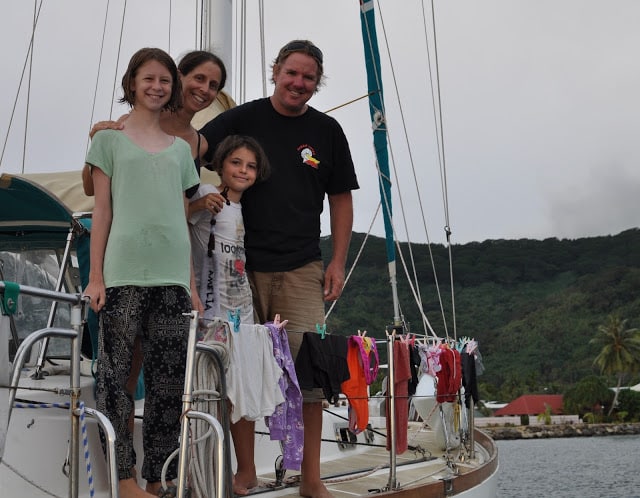10/9: Too Fast
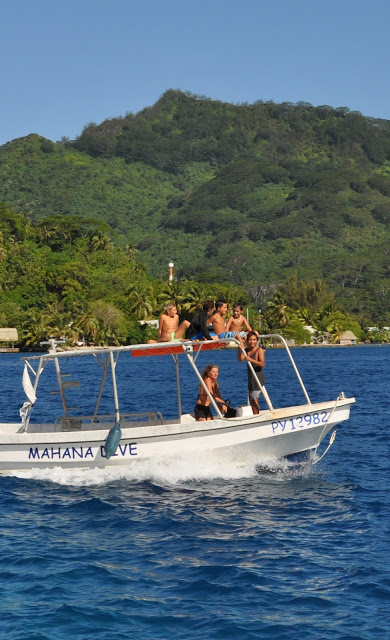
Traveling, we wind up in a lot of places that excite us. We also wind up in a few places that aren’t our cup of tea (though this is a difficult assessment because invariably these same places offer experiences or stories, rooted in the aspects we liked least, that prove interesting and memorable and make us happy we went after all). And we also wind up in a very few places in which we toy with the idea of living there someday.
In the Society Islands of French Polynesia, the smaller islands excited us, almost to the point of toying with the idea of living on one someday. They’re each surrounded by a South Pacific lagoon like you’d see on the cover of Cruising World and separate from the Tahiti-Bora Bora-Moorea tourist hotspots
Our visits were short (as we were feeling the pressure of having overstayed a French welcome that ends abruptly at 90 days). So we’d tour around on bikes, play in the water, enjoy the bar and the company of our cruising friends, buy fresh veggies from local farmers, send the girls off on play dates with locals, hit a bommie pretty hard, provision, Skype family, take on water, and then set sail.
Which is all awesome, and we’re all grateful for having been able to spend more time than most people ever get in places like these, but I want to acknowledge that we barely scratched the surface. Every place we’ve been fortunate enough to travel to, our visits have been long enough to realize how much more there is to experience—we need a dozen lifetimes. And that’s perhaps the most important life lesson, realizing how short one life is.
9/27: Passage Slumber
Sailing far out to sea, such as on the Mexico-to-Marquesas passage we made this year, it can sometimes seem pointless to keep a careful watch when hour after hour, day after day, you see nothing but 360 degrees of empty ocean. But then, hundreds and hundreds of miles out to sea, in the darkest wee hours, you spot a fast-moving ship on the AIS–still too far over the horizon to be seen. You note that the displayed closest point of approach (CPA) is less than half a mile. You watch, wide awake. The CPA doesn’t change and now the lights from your traffic appear as a dim glow on the horizon. You watch a while longer until the displayed time to CPA (TCPA) is just a scant 30 minutes. You make a course change and watch as the CPA increases. You radio the ship to let them know you’ve changed your heading, to ask if they even see you. You don’t get a response. You watch. The green running light on their bow dims as the red light intensifies. Finally, the white stern light comes into view and the drama is passed.
This scenario played out twice aboard Del Viento during our 26-day crossing. It highlights the need for careful watchkeeping, despite a seemingly empty ocean.
From our example, it can seem reasonable to rely on electronics for watchkeeping. AIS alarms and radar alarms can be effectively augment the human eye. They are certainly great watchkeeping companions–and a boon to singlehanders faced with choosing the best times to be fatalistic so they can get some rest. But these electronic devices do not eliminate the need for the human eye. Which means that on most boats, certainly ours, somebody is awake and paying attention 24 hours a day when underway.
How do we manage the sleeping schedule?
Traditionally, crew on long passages will adopt a rigid schedule of 3- or 4-hour watch periods (8 to 6 periods in every 24-hour day). For a double-handed crew (such as parents of a cruising family), this usually means on for 4 hours, off for 4 hours, on for 4 hours, off for 4 hours–for weeks on end. Throw in a third crewmember and this schedule becomes more humane: on for 4 hours, off for 8 hours.
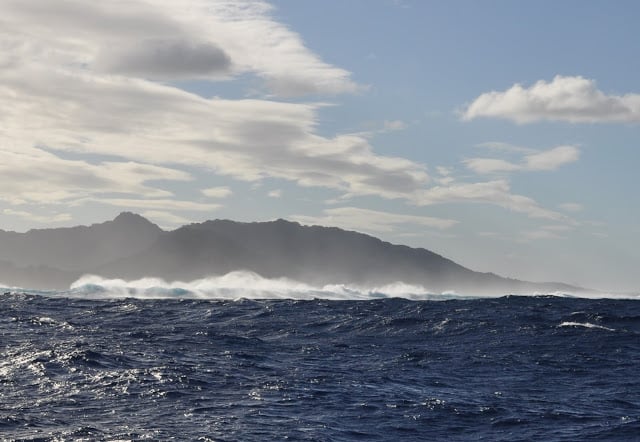
But we rarely have a third crewmember aboard (though Eleanor is only a few years away from being ready…). Instead, we maintain an unorthodox, flexible schedule that works for us and has stood the test of many multi-day passages (we’ve done it the same way since our pre-kid cruising days).
In short, we employ a watch schedule that takes advantage of our natural sleep patterns and preferences. I am a stay-up-late kind of guy and Windy is a wake-up-early kind of gal. I prefer to be very tired before falling asleep, she merely has to lie down and read a few pages before she is out. So aboard Del Viento, a typical day at sea goes thusly:
1730: At roughly the five-o’clock hour, you’ll find all of us awake, topsides or down below, me preparing a meal. When we’re done eating, Eleanor and Frances will lead the clean-up. Windy will head to her nav station where she’ll fire up the shortwave radio and Pactor modem and try to get weather or emails downloaded. I’ll head to the cockpit.
2000: By this time, Windy has said goodnight to all. If one or both of the girls is inclined, they’ll join her in bed where she’ll read to them for a while before she dozes off. Oftentimes, the girls will then crawl back out of bed and head to the other end of the boat where they’ll play or read quietly for a couple hours more.
2200: The girls have maybe fallen asleep by now, or will soon be. On occasion, Eleanor will don a harness and headphones and come sit in the cockpit with me and I’ll introduce her to all the excellent music that she missed simply because she was born in the wrong millennium (she rarely makes it past midnight).
0300: I’m tired. Sometimes I’ll stay on watch to 0400, sometimes I’ll fade by 0200, but 0300 is when I usually hit a wall. I’ll go below, wake Windy, brief her on anything she needs to know, and crash into the warm spot she’s left in the berth. Windy is a coffee drinker and the last sounds I usually hear come from her getting a cup brewing.
0600: Eleanor is an early riser and will likely be up with the sun and talking to Windy in the cockpit.
0900: This is roughly the time Frances and I stir. We all stay awake for breakfast.
1000: Windy goes down for a nap. The girls and I hang out.
1230: Windy is awake. We all hang out. Watchkeeping is a family affair at this time. We eat.
1400: I go down for a nap.
1700: I wake and begin making dinner. Not only am I the only person aboard not prone to seasickness, I also like to cook.
There, that was 24 hours. The schedule works well for us. Windy and the girls will usually do little school work on passage–sometimes school light, sometimes nothing. But there is lots of downtime for everyone, lots of reading and drawing and writing and music listening.
Of course, that’s just how we do it. Lots of other crews handle watchkeeping differently. (All of this information is distilled in Voyaging With Kids: A guide to family life afloat–including thoughts and experiences with taking additional passage crew aboard. Both the print book and eBook are now available. Ask for it at your library, local bookstore, or click the link on this blog.)
9/24: Passage Notes:
I’m writing from Del Viento, currently anchored off Suwarrow, a remote atoll in the Cook Islands. Though only 700 nautical miles from our last port (Bora Bora), it took us seven days to get here. Seven unpleasant passage days.
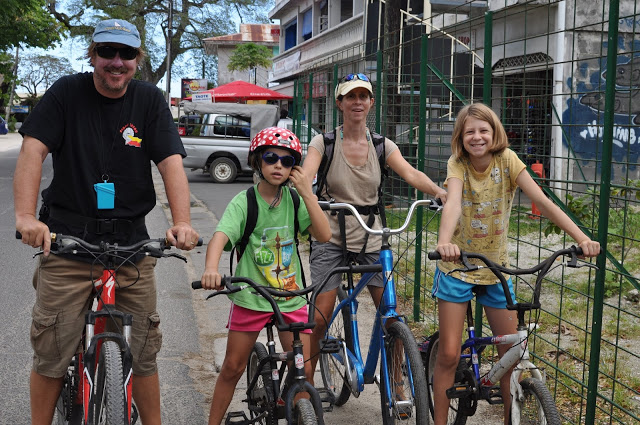
We actually departed Bora Bora headed for Niue, a tiny country well southwest of here. But a few days into the passage, it looked like uncharacteristic westerlies were forecast for our destination. This would have made Niue’s single roadstead anchorage untenable. So, we turned northwest and headed for Suwarrrow. All told, we traveled about 800 miles.
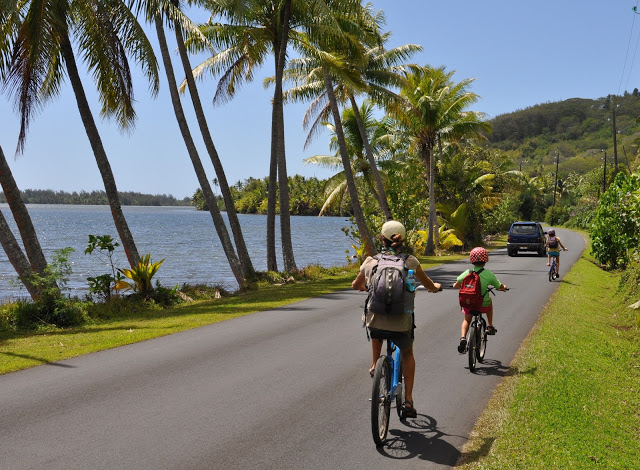
The winds were mostly astern, but they blew soft, then harder, then harder, then softer, then harder, and finally softer–which meant lots of reefing our big main. Because the seas were big and a bit confused, and because the wind direction varied with the dozens of squalls that passed overhead, and because we were a few times caught overpowered, we also jibed several times, usually in the middle of the night when we were both tired and it was raining. Our boom brake worked satisfactorily, but it’s still an awful event, especially with our 400 square-foot main. So reefs went in and out during this trip, but most of the time we were fully reefed.
We suffered damage on this passage too:
- The starboard lazyjack line parted at about the halfway point of the passage. This one sucks because lowering the sail is a pain without both sides in place. It sucks even more because this breakdown is a result of deferred boat maintenance. I noticed chaffing on this line back in Tahiti and I could have addressed it since then, I just didn’t. My poor seamanship.
- The upper batten pocket of the mainsail became detached from the sail, from the luff to about halfway to the leech, about 20 inches of thread ripped out. I think this happened during a jibe when the main was reefed and I noticed the end of the batten was lodged forward of one of the starboard stays. I lowered the sail and Windy sheeted it in before I raised it back up, but the damage was done.
- I noticed more of the UV protection on our headsail is unraveled. This is the same problem that’s been dogging us since the Mexico-Marquesas passage. The good news is that all the hand sewing I did on that passage (and later in Ua Pu) is still holding up. The bad news is that there is still miles of unreinforced stitching to fail.
- Two bolts sheared off on the solar panel arch I built in Mexico, in 2011. This was an easy fix underway, and the arch has held up reasonably well for all it’s been through–now supporting three panels. But it highlights the need for reinforcing welding that would have made a lot of sense to have done in Mexico before we left.
- Our batteries have reached the end of their life. I came to realize that on this passage. The equalization we did in Papeete made a difference, but came too late in the game. Admittedly, I’ve not been the best battery caretaker. Our lifestyle has demanded a lot from our bank and we’ve run the lights and music and toys late into many nights when we could have cut back to keep the voltage up. We’ve lived for weeks and weeks on the hook without starting our engine, and we live just fine–but we have been living just fine for four and a half years at the expense of our bank. All we’ve ever had to keep them charged is our 430 watts of solar (and the alternator on our auxiliary). I’m sure we’d have gotten more life from them had we invested in a wind generator or a genset–but would we have come out ahead in the long run? Moneywise? It’s the nature of boat house batteries that they are never returned to a full-charge state (unless plugged into a dock) and sulfating happens. In our case, sooner than I would have liked.
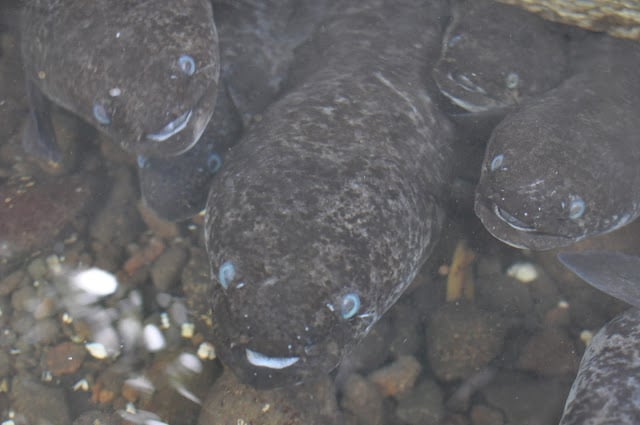
Also, Windy and the girls were more seasick on this trip than they’ve been in a while. All of it added up to a passage we were happy to put behind us.
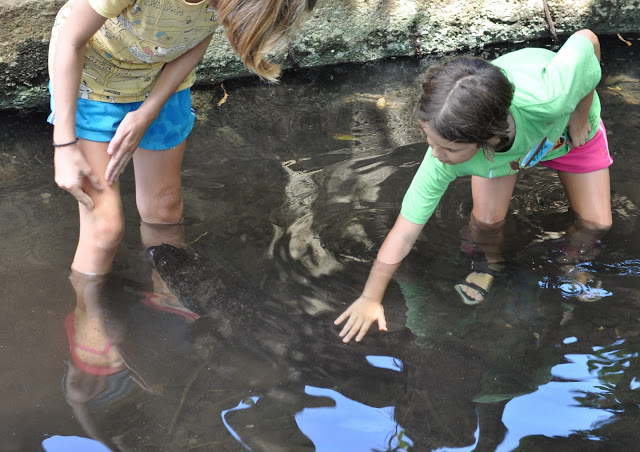
We’re going to hang out here in Suwarrow for a few more days and the head for American Samoa where we have mail and parts waiting for us, sent General Delivery. Hopefully the beer there isn’t too expensive and we can also find someone with a good sewing machine and good sail repair skills. Then I’ll look for a stainless welder who can come to the boat for a quick job. Then I’ll try and source replacement batteries. Uhg. It’s hot here in Suwarrrow. We are back closer to the equator, maybe that’s why. The heat here is unlike anything we’ve yet felt in the South Pacific–as hot as it was during our summer in the Sea of Cortez, and the water in this atoll might be even warmer than what we dove into everyday in the Sea. But I’ll save my descriptions of Suwarrow until we have internet and I can post pics–probably the first week of October. Where has this year gone?
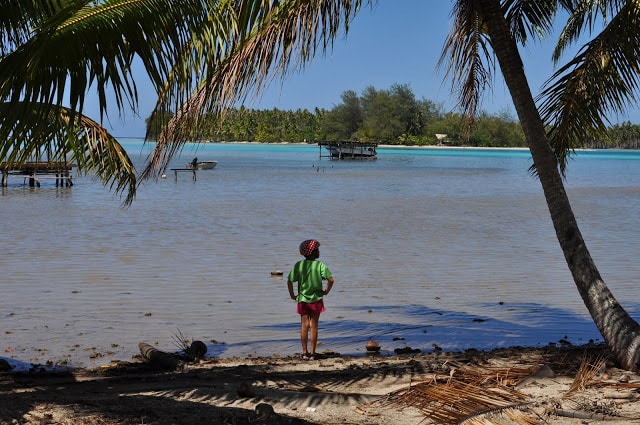
In our twenties, we traded our boat for a house and our freedom for careers. In our thirties, we lived the American dream. In our forties, we woke and traded our house for a boat and our careers for freedom. And here we are. Follow along with the Roberston’s onboard Del Viento on their blog at www.logofdelviento.blogspot.com.
